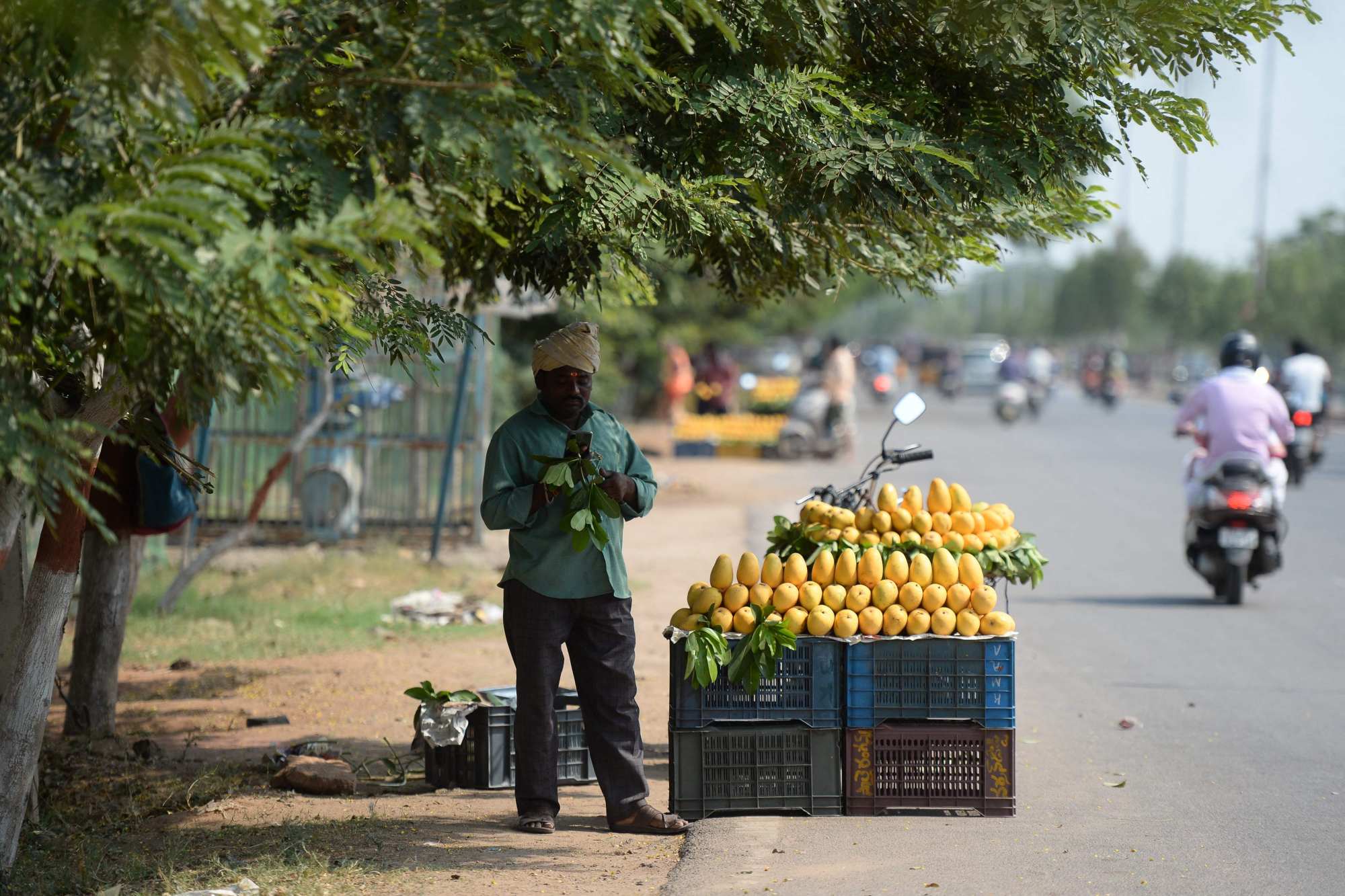
It takes two to mango: climate change, higher costs threaten India’s ‘king of fruits’
- Mangoes are an integral part of Indian history, culture, mythology and religion – equal parts sacred symbol, medicinal plant and delicious summer snack
- But extreme temperatures and unseasonal rains have badly dented this year’s mango harvest, affecting output in the world’s largest producer of the fruit
This year, climate-related changes have already affected the mangoes’ flowering and fruiting patterns.

India is the world’s largest producer of mangoes, accounting for 54 per cent of global mango production.
Modi’s dilemma: keep Indian voters happy or feed the world
Insram Ali, president of the All India Mango Growers’ Association, blamed climate change and a lack of proper flowering for this year’s poor mango harvest, which is forecast to be a fraction of previous years.
Uttar Pradesh’s “mango belt” usually produces about 4-5 million tonnes of mangoes per year, but this year there may only be 1.5 million tonnes. “This summer’s fruit will definitely be dearer because of less supply,” Ali said, pointing to the use of substandard pesticides as another reason for the poor crop.
Paradoxically, growing organically – without the use of fertilisers or pesticides – could help India’s mango farmers access new markets in future, as consumers become increasingly aware of the relationship between food and health.
Rising fuel prices have further added to the cost of mangoes. K Sridharan, a fruit stall owner in Chennai, said he had been forced to adjust his margins to offset transport costs before selling the fruits to customers because the wholesale prices were so high.

Shruti Raman, a housewife in Chennai, said she would buy mangoes “whatever the price may be”. “A summer without mangoes is unthinkable,” she said. “We may not buy as many but they will definitely all be eaten. After all, if we don’t buy them now, we will have to wait until next year for them to be available again.”
Part of the fruit’s allure stems from the fact that mango season in India only lasts about 100 days – traditionally from late March through June – and is vulnerable to changes in the weather.
Indians will often stock up on dried mangoes, as well as chutneys, pickles and powders, so they can enjoy the taste of the fruit even after the season is over.
Mangoes are an integral part of Indian history, culture, mythology and religion. Ancient Indian kings planted mango trees along roadsides and highways as a symbol of prosperity. The fruits have also been used as gifts in political negotiations and as diplomatic gifts. Aurangzeb, the Mughal emperor, sent mangoes to Shah Abbas of Persia to support his fight for the throne.
India looks to East Asia, Middle East in hunt for mango buyers
The mango is also a sacred symbol in India. People place mango leaves at the entrance of houses as part of religious festivals to symbolise peace and happiness. The fruit’s shape, meanwhile, has inspired the paisley design – an iconic Indian motif that’s used extensively in embroidery and silk saris.
Some people even believe mangoes have healing properties.
Every part of the mango plant – from the fruits and leaves to the twigs and bark – is used as medicine in one way or another. Some believe a mango a day can keep wrinkles away, since its high vitamin C content helps in building collagen, an essential element to protect skin elasticity. Boiling a raw mango and drinking it is also said to be great for curing heatstroke.
In her book Fix It With Food, Indian nutritionist and author Kavita Devgan said mangoes contain a rich concentration of “anticancer and anti-inflammatory antioxidants”.
“Mangoes are loaded with more beta-carotene than most other fruits and are also a great source of vitamin C, which again helps boost our immune system,” she said. “They also have minimal fat and sodium, zero cholesterol and are not very steep in calories, so make a perfect snack or dessert in the summer.”

